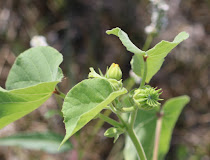 |
Song Sparrow
|
Most people think of bird migration in terms of "flying south for the winter". All those birds whose company we enjoyed throughout their summer nesting season fatten up and begin their long, arduous journeys to warmer climes in the southern US, or Central and South America to while away the winter months.
But for some birds, those warmer climes are...here, in Iowa and the midwest. They spent their breeding season in the far north: the Canadian boreal forest and other near-arctic regions. Many of them will simply pass through our area as they head further south with the other birds, but a few hardy little birds will stick it out here, through Iowa's short, windswept days and long, freezing nights.
 |
Dark-eyed Junco
|
Meet our winter sparrows! All can be found along the Greenway trail in winter, and you can also get to know many at closer range if you have backyard feeders (Project Feederwatch is a great citizen science program that involves winter birds). All the little brown birds can be daunting to tell apart at first, but with close observation of key features it gets a little easier!
 |
American Tree Sparrow
|
A perennial winter favorite--and one of the easiest sparrows to identify--is the charming
Dark-eyed Junco (
Junco hyemalis). There are a few geographical variations, but around here they generally have a solid gray head and body with a white belly. If you just catch them taking flight from a distance, you can see the white feathers on the outer edges of their tails.
The American Tree Sparrow (Spizelloides arborea), has a bicolored bill and dark spot on its unstreaked chest. It has a rusty cap with a matching stripe through its eye.
 |
Fox Sparrow
|
Fox Sparrows (
Passerella iliaca) closely resemble the more common Song Sparrow, with heavily streaked breasts. Though their color is variable, the Fox Sparrow is generally more foxy reddish brown, and the streaks on its breast are heavier, with spots shaped like chevrons. Its face also seems to me to have less, and less well-defined, white markings than the Song Sparrow.
The beautiful black-and-white striped cap of the White-crowned Sparrow (Zonotrichia leucophrys) is very distinctive, atop a fairly plain and uniformly gray face and throat. The White-throated Sparrow (Zonotrichia albicollis) has a similarly streaked cap, but also sports a clean white throat as well as yellow mark in front of its eyes. (To complicate matters, there is also a tan-striped form where the white crown streaks are replaced with tan.)
 |
White-crowned Sparrow
|
 |
White-throated Sparrow
|
In addition to these snowbirds, there are several other sparrows that spend the entire year with us. Prominent on the Greenway are the Song Sparrows (Melospiza melodia), with heavily-streaked breasts with a central dark spot. These are one of the most common sparrows you'll probably encounter on the trail.
 |
Swamp Sparrow
|
Much less common but still reported year-round are
Field Sparrows (
Spizella pusilla), featuring a pink bill and white eyering (their facial features look soft to me, with a blushy cheek spot), and the
Swamp Sparrow (
Melospiza georgiana), with a more skulking habit, gray face with reddish cap, and a white throat.
And last but not least are our two non-native sparrows. House Sparrows (Passer domesticus) should be familiar to anyone who pays attention to birds! They hang around in noisy flocks, the plumage of the winter males--black bibs, gray caps with white cheeks, and reddish-brown napes--more subdued than their summertime feathers. The females are very plain brown, with a light brown stripe above the eye.
 |
House Sparrow (male)
|
 |
House Sparrow (female)
|
Eurasian Tree Sparrows (Passer montanus), look similar to male House Sparrows, but they have a handsome brown cap and a distinctive black spot on their white cheeks (males and females look the same). They are less common around here than the ubiquitous House Sparrow, but there is a small flock resident near the woods on the north end of the Greenway.
 |
Eurasian Tree Sparrow
|


















































